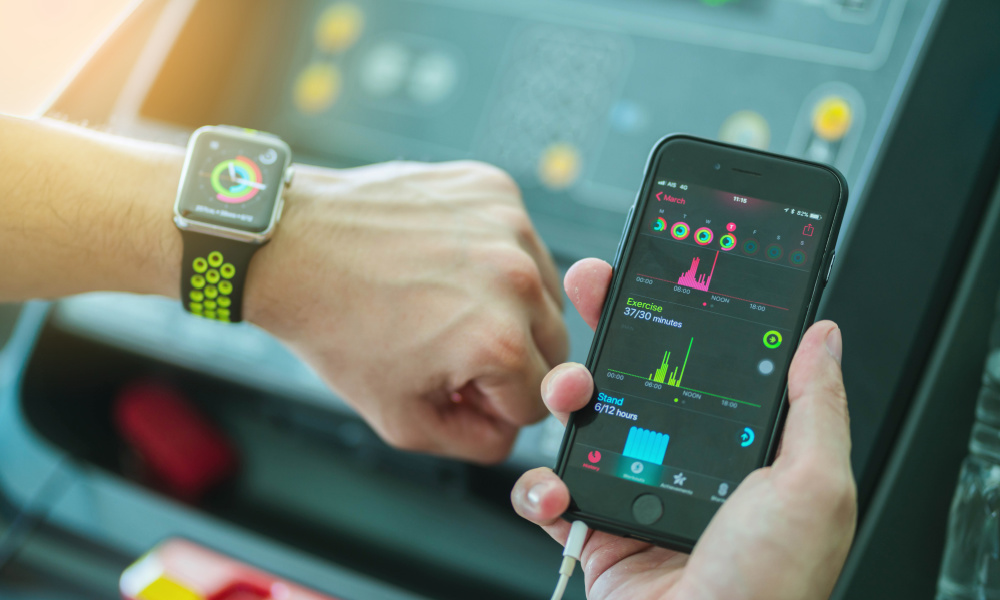Wearables, surveys, and more: Using data analytics to improve employee wellbeing
- 5 Min Read
Serena H. Huang, Ph.D., Founder of Data by Serena and former PayPal Global Head of People Analytics, Visualization, and HR Technology shares several methods of improving employee wellbeing through data analytics, from wearables to surveys and beyond
- Author: Dr. Serena H. Huang
- Date published: Oct 20, 2023
- Categories

Imagine a world where your employer has access to your heart rate and sleep patterns. Your manager adjusts your workload based on your stress levels. No, it’s not in the future. This is from a case study of employees at PwC UK. In 2019, a pilot group of PwC employees in the UK began wearing devices connected to their work calendars. During the COVID-19 lockdown, PwC UK asked for volunteers to wear a wearable device for comparison with the 2019 baseline. Some of the comparisons between this newly remote workforce and their pre-COVID peer group were unsurprising, such as the 27% drop in daily steps. Other data analytics showed how much back-to-back video calls impacted employees’ sleep.
What actions did the firm take with these data? The data painted a clear picture of the conditions that make employees thrive, so PwC adjusted wellness benefits and workload. It also empowered employees to take more breaks throughout the day.

Of course, wearables are not the only way to gather data on employees’ wellbeing. You are not alone if you feel like that is too “big brother” like. Surveys with follow-up focus groups can be an alternative to wearable technology, although the measurements will not be real-time. An employee survey including questions on several aspects of wellbeing can provide actionable insights upon deeper analysis. Some examples can include “overall, I am in excellent health” and “my work positively contributes to my overall health and wellbeing.” The respondents answer on a scale from “strongly agree” to “strongly disagree.”
What can you do with such wellbeing data analytics?
1) Identify top and bottom areas within the organization. Which business unit is doing particularly well? What’s contributing to their success? Which teams are struggling and need more support?
2) Leverage text analytics to identify specific areas of opportunity and create action plans. Does the word “workload” or “meeting” come up a lot as a comment on these wellbeing questions? Is the sentiment associated with these words negative? It may indicate an issue within the organization.
3) Driver analysis to understand the factors that provide a thriving condition for employees. The driver analysis uncovers the relationship between different survey items and the outcome question, which can inform the specific factors that improve employee wellbeing.
Mental health has increasingly been in the news, from an American health panel recommending all adults under 65 be screened for anxiety to younger employees being vocal about their employer offering mental health benefits.
Did you know that managers have a massive impact on their team members’ mental health? In fact, managers impact employees’ mental health (69%) more than doctors (51%) or therapists (41%) — and even the same as a spouse or partner (69%).
What can managers do if they want to begin using wellbeing data analytics but there is no quick way to implement a survey? They can still create an environment where employees can talk about their wellbeing more openly and ask for support whenever needed.
Alternatives to surveys as a source of wellbeing analytics
1) Regular check-in: One practice I used twice a week with my team was a casual question of “how are you doing right now on a scale of 1 to 10?” followed up with “what is driving that number for you today?” For those with lower scores, I would see what support either I or other team members could provide. This simple question helped me quickly create a common language and normalize talking about how everyone was doing.
2) Familiarize with health benefits, leave options and resources offered: If an employee is struggling with mental health challenges, the last thing they want to do is to call the benefits department or navigate a complex website to figure out how to get help. Managers can speed up the process for their teams to get help by having EAP numbers and a summary of benefits handy.
3) Recognize employees of color face different challenges: It is well-documented that Black, Indigenous, People of Color (BIPOC) face significant barriers to mental health care because of racism. Language and cultural barriers can also be deterrents for their families. According to the National Alliance on Mental Illness (NAMI), almost half of White Americans with mental illnesses receive therapy or counseling. Only 33% of the Hispanic and Latinx community, 31% of the Black community, and 25% of the Asian American and Pacific Islander communities receive needed therapy. Research also indicates that BIPOC are:
- Less likely to have access to mental health services
- Less likely to seek treatment
- More likely to receive low-quality care
- More likely to stop treatment early
There is no argument employee wellbeing has an impact on the business’s bottom line. In the post-COVID era, organizations are in a powerful position to help employees with their health and wellbeing. It is time we leverage data analytics and empower managers when it comes to employee wellbeing.









